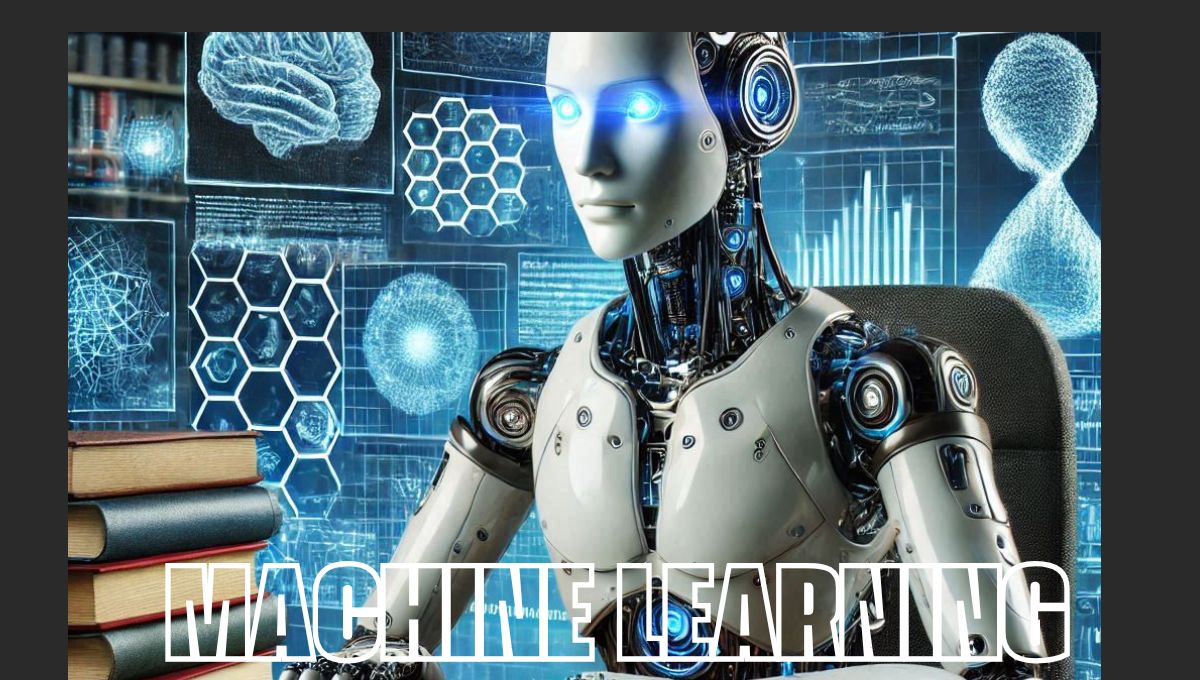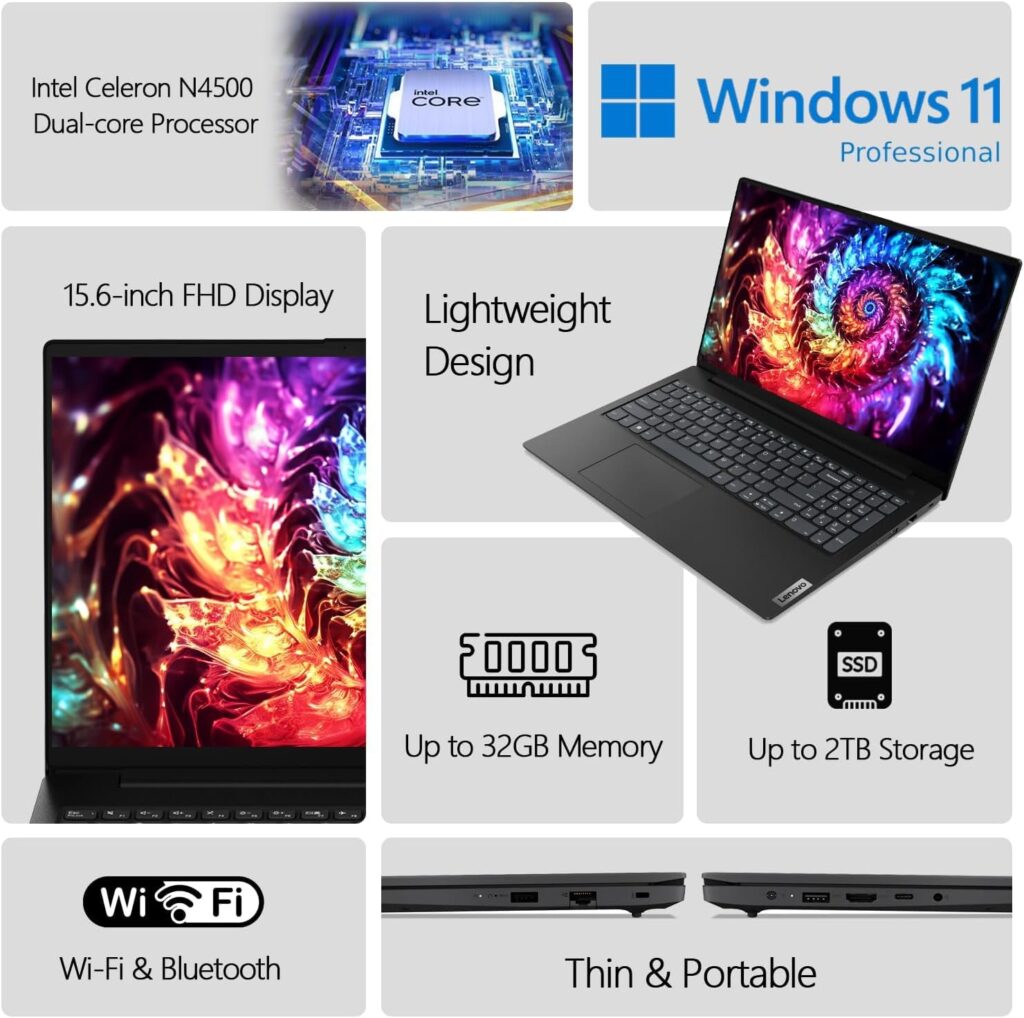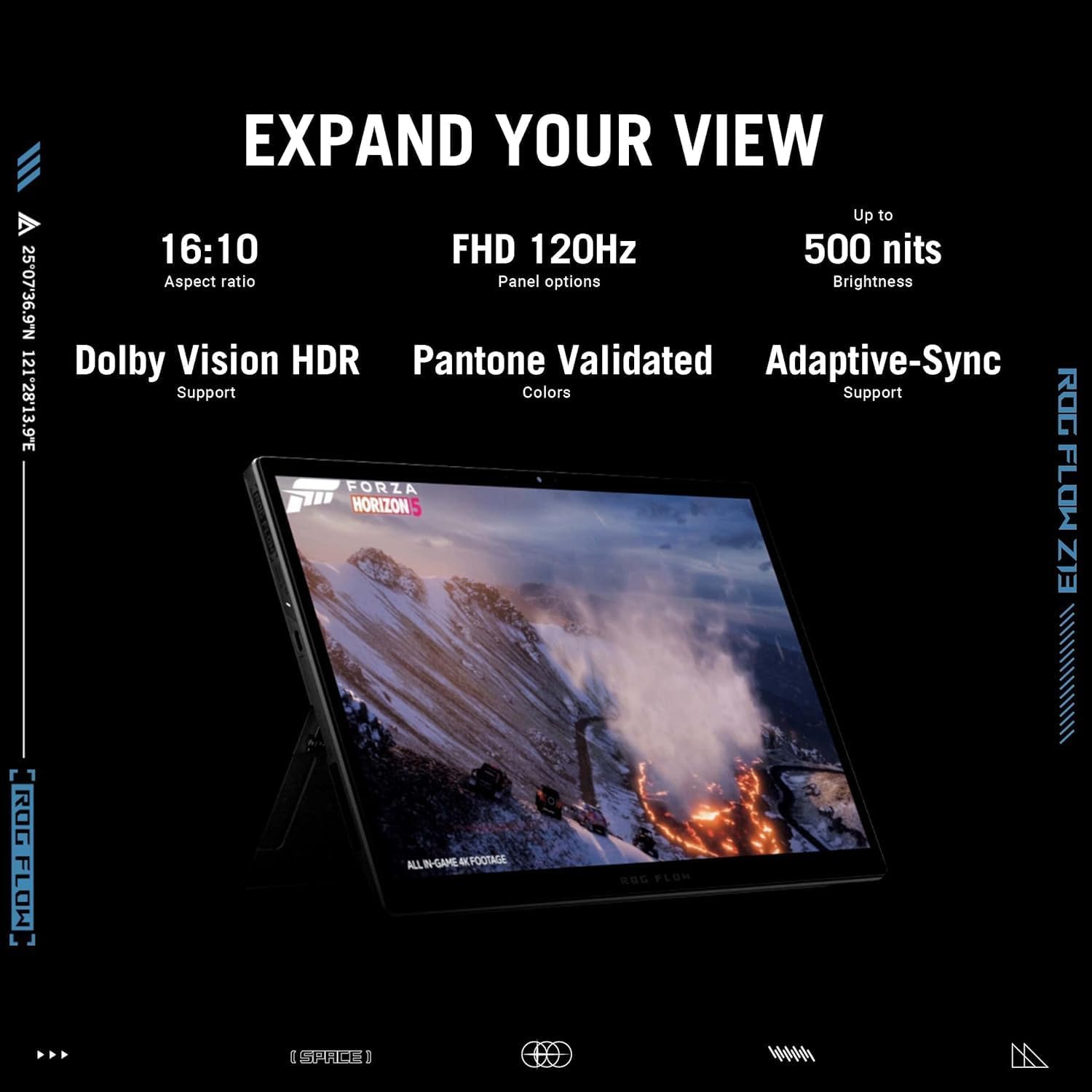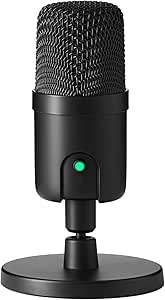COMPUTING
What Is Machine Learning?

What Is Machine Learning?
Machine learning (ML) is a branch of artificial intelligence that enables computers to learn from data without being explicitly programmed. Instead of following predefined rules, machines analyze patterns in data to make predictions or decisions.
In today’s technology-driven world, machine learning is vital in transforming industries. It helps create new ideas, automate repeated tasks, and improve decision-making. It is used in virtual assistants like Alexa and Siri, recommendation systems on Netflix and Amazon, healthcare to predict diseases, and finance to find fraudulent activities.
The Evolution of Machine Learning
Machine learning began with rules-based systems wherein the computers followed instructions without any flexibility. It was suitable for simple tasks but experienced difficulty with complex and dynamic problems.
The greatest landmarks in ML are the neural networks developed in the 1980s, which observed human learning, and the emergence of large amounts of data in the 2000s, allowing machines to get accurate about certain things. Deep learning in the 2010s changed how image recognition and natural language processing are undertaken; here, machines have overtaken humans in several tasks.
Initially, machine learning was primarily used for academic research. But now, it has entered the mainstream industries. Startups use predictive models, and big tech companies are creating self-driving cars and AI chatbots.
How Machine Learning Works: Simplified Explanation
Machine learning essentially operates based on three primary building blocks:
1. Data: The Fuel of Machine Learning
Data is at the base of machine learning. The more good data any machine has, the better it works. Take the example of helping a machine learn how to spot cats in pictures. You give it thousands of images of cats labeled and things that are not cats.
2. Algorithms: The Brain Behind Predictions
Algorithms can basically be considered as a set of mathematical calculations; algorithms are at play to process the data included, including decision trees, neural networks, or support vector machines, depending on the problem.
3. Model Training: How Machines Learn Patterns
Learning a model is like teaching a student. The machine is given data and changes its settings (sometimes called parameters) until it can predict results correctly. For instance, if the model mistakenly thinks a dog is a cat, it learns from the mistake and improves with more data.
Analogy: Teaching a Child
Think of machine learning as an analogy; here, we consider teaching a child to recognize fruits. You show the child different pictures of apples and bananas and tell them which is what. After some time, the child learns to see apples and bananas without help. Similarly, machines learn from examples of data and improve their decisions over time.
Types of Machine Learning
Machine learning is changing the way we solve problems. However, do you know there are several kinds of machine learning? Each has a different purpose and helps machines learn in different ways. Three examples follow:
1. Supervised Learning
Supervised learning is like teaching a child using flashcards. You give the machine data with labels, meaning the answers are known beforehand. For example, you can train a model to recognize animals by showing it pictures of cats, dogs, and birds.
- How it works: It learns to relate input signals-whether images, for instance, output signals-animal names, in this case, discovering patterns in the labeled data.
- Examples in Use:
- Predicting house prices based upon parameters such as size and area.
- Finding spam e-mails in your inbox.
A great application for tasks where you have clear and well-organized data.
2. Unsupervised Learning
In unsupervised learning, the machine works without labeled data. It just finds hidden patterns or groupings in the information. To explain this better, imagine giving the machine a puzzle but without a picture to guide it.
- How It Works: The machine puts data into groups that are alike.
- Examples in Use:
- Customer segmentation in marketing (grouping customers by behavior).
- Recommending products on online shopping sites by finding similar likes.
This type of learning is excellent when you would like to look at your data without predetermined answers.
3. Reinforcement Learning
Reinforcement learning is all about trial and error. The machine learns by interacting with its environment and receiving rewards or penalties based on its actions. It’s like training a dog with treats.
- How It Works: The machine takes actions, observes results, and adjusts behavior to maximize rewards.
- Examples in Use:
- Teaching robots to walk or play games like chess.
- Optimizing delivery routes for logistics companies.
Reinforcement learning excels in dynamic environments where decisions must be made in real-time.
Real-World Applications of Machine Learning
Machine learning is more than just an idea; it has transformed many industries, changing tasks and decisions.
1. Healthcare: Predictive Diagnostics and Drug Discovery
Machine learning has started saving lives in healthcare. Diagnostics can already predict the outcome by mining medical records and images. Researchers have lately revealed that through machine learning, breast cancer can be predicted with about 94% accuracy.
Machine learning has also quickened finding new drugs. AI models can guess good drug candidates faster and cheaper than in the old ways. For instance, Google’s DeepMind built AlphaFold, which correctly predicts protein shapes, an important step in learning about diseases.
2. Finance: Fraud Detection and Algorithmic Trading
In finance, it catches fraud. Machine learning helps the banks in real-time view of transactions and highlight suspicious activities. JPMorgan Chase said they had a 50% decrease in false alarms for fraud alerts after using machine learning.
Algorithmic trading is another application of machine learning. This looks at market trends and trades very quickly. These systems help investors make more money and take fewer risks.
3. Retail: Personalization and Inventory Management
Using machine learning in stores helps them enhance how customers feel about shopping. Product suggestions, like those on Amazon, are based on ML algorithms based on shopping habits. Research proved that sales increase by 20-30% through personalized suggestions.
Another area where ML excels is in inventory management. It helps retailers forecast demand for the right products at the right time, reducing waste and increasing efficiency.
4. Entertainment: Recommendation Systems
For instance, Netflix and Spotify use machine learning to keep users engaged. Such recommendation systems look at what people watch or listen to with the aim of recommending such content. Netflix said its recommendation algorithm saves the company a $1 billion loss, which it incurs yearly due to its users leaving.
Benefits and Challenges of Machine Learning
While many advantages relating to machine learning abound, several problems cannot be avoided.
Advantages
- Efficiency: Machines automate repetitive tasks, freeing human resources for strategic roles. For instance, 24/7 customer queries can be handled by ML-powered chatbots.
- Scalability: ML models can evaluate vast data volumes rapidly, enabling the business to scale without requiring additional human resources.
- Automation Workpieces such as data analysis, fraud detection, and customer segmentation are automated, saving time and reducing errors.
Problem
- Biases in the Data Input: Such machine learning systems may pick biases, which are preserved and reflected in unfair results. For instance, biased hiring programs may favor the development of some groups over others.
- Interpretability Issues: Complex models like deep learning are often considered “black boxes,” meaning it’s hard to understand these models’ decisions.
- High Resource Intensity: Training a machine learning model requires significant computational power and resources. These may be resource and cost-intensive.
Understood and solved, these problems will enable organizations to unlock the full potential of machine learning and thereby reduce risks.
Emerging Trends in Machine Learning
Machine learning is continuously improving and exploring new and exciting trends. Let us review some of these:
- Federated Learning: Instead of sending data to one central server, federated learning lets machine learning models train directly on the devices. This means better privacy because your data stays on your phone or computer. For example, Google uses it to provide personalized text suggestions.
- Self-Supervised Learning: This helps machines learn from data not labeled, thereby less reliance on human supervision. It is propelling some of the fastest growth in understanding human language, such as GPT models.
- Generative AI: Tools such as ChatGPT or DALL·E. Generative AI creates realistic text, images, and more. Creativity is growing in various fields.
- Ethical AI: The future isn’t just about innovation; it’s about responsibility. Ethical AI ensures fairness, transparency, and accountability, especially when AI impacts decisions like hiring or lending.
These trends are not just popular words; they change how we live and work.
How to Get Started with Machine Learning
Nerves are commonly associated with starting machine learning, but a proper plan can make it possible.
Skills Required:
- Programming: Most people prefer using Python and R.
- Math: An individual grasps how algorithms work by being familiar with basic statistics, linear algebra, and calculus.
Tools to Learn:
- TensorFlow and PyTorch both thrive on modeling and training.
- Scikit-learn: Great for beginners, with very simple ML tools.
Where to Learn:
- Some excellent courses are available here in Coursera, edX, or Udemy.
- Kaggle provides open datasets for practicing.
- The YouTube channel “3Blue1Brown” Explains very complex matters.
Taking small steps every day will build your confidence and skills over time.
FAQs About Machine Learning
1. What is the difference between AI and ML?
Artificial intelligence refers to machines that can mimic human thought. Machine learning is the subset of artificial intelligence whereby machines learn from data, not by direct programming.
2. Do I have to know more advanced mathematics to learn ML?
Not at first! Knowing the basics is enough to get going. You can explore more math as you go along.
3. Is machine learning just for tech companies?
And, no! Healthcare, finance, retail, and even entertainment industries apply machine learning to personalize services, fraud detection, and even recommendations.
Conclusion: Why Machine Learning Matters
Machine learning transforms industries: it makes systems smarter and life easier. It can automate even boring tasks or solve difficult problems; its potential is unlimited.
Want to know more? Start exploring your learning today! See our associated articles and resources to learn more about your machine-learning potential.
COMPUTING
Why a Computational Biology Masters Will Catapult Your Career Further
Discover everything about computational biology masters programs, career opportunities, top universities, and how to succeed in this rapidly growing field.

Pursuing a computational biology masters degree opens doors to one of the most exciting and rapidly growing fields in modern science. The program further uses computer science, mathematics and biology to address complicated biological issues using state-of-the-art tools. Whether you’re passionate about discovering new drugs, understanding genetic diseases, or analyzing massive datasets from genome sequencing projects, a computational biology masters provides the perfect foundation for a rewarding career at the intersection of technology and life sciences.
What Makes Computational Biology Masters So Powerful
Computational biology masters programs have gained tremendous popularity because they prepare students for high-demand careers in biotechnology, pharmaceuticals, healthcare, and research institutions. Additionally, college graduates in biological sciences tend to make much more money from the start, since their starting salaries exceed $75,000 each year.
Recently, the amount of biological data being produced has caused the field to grow quickly. For example, the Human Genome Project needed 13 years to finish, whereas technology now can do the same job in only hours. Therefore, we urgently require experts who can interpret and use biological information.
Dr. Jennifer Martinez, who completed her computational biology masters at Stanford in 2019, shares her experience: “I started as a biology major who was intimidated by coding. Still, as I progressed, I gained more self-assurance in programming and learned a lot about biology. Now, I design algorithms used by a leading biotech company to recognize possible cancer treatments.
Core Skills You’ll Develop in Computational Biology Masters
Jobs in Programming and Software Development
Students in computational biology masters programs typically learn multiple programming languages essential for biological data analysis. Because they perform well in statistical analysis and data visualization, Python and R are the languages that coders use the most. Many students also get the chance to do the following:
• Using Python for both programming and machine learning
• Using R helps with both statistics and bioinformatics.
I am working on the SQL portion of database management.
Unix/Linux based programs for large-scale data processing
• MATLAB is useful for mathematical modeling.
The field of statistical analysis and machine learning.
Furthermore, computational biology masters students develop strong statistical foundations necessary for analyzing biological experiments and large-scale datasets. Machine learning techniques let students predict how proteins are constructed, choose important biomarkers for diagnosing diseases and tell the difference between various cell types.
The integration of biological knowledge.
Experience in programming and research methods is important for computational biologists, but knowing biology is just as necessary. For this reason, programs usually offer classes on:
• Topics include molecular biology and genetics
• The study of cells and biochemistry is part of the discipline.
• Evolution and the study of how different organisms spread geographically
Studies have been done through systems biology.
Step-by-Step Guide to Choosing Your Computational Biology Masters
Step 1: Think About Your Personal Experience and What Interests You
Start by looking at what skills and education you have at present. Most computational biology masters programs accept students from diverse backgrounds, including biology, computer science, mathematics, physics, and engineering. Alternatively, a certain entry course may be required for a given type of program.
Allow yourself to recognize which interests you most about computational biology. Are you curious about learning about drug discovery, personalized medicine, evolutionary biology or environmental genomics? Discovering what you want to study will help you decide the right program.
After that, find information about the courses and specialties in the program.
Next, investigate different computational biology masters programs to find those that align with your goals. A variety of computer programs are available that either highlight bioinformatics and data analysis or are centered on using math or machine learning.
It is important to think about:
• What courses should I complete before applying?
• It usually takes 1-2 year to finish a program
• The difference between having a thesis and enrolling only in coursework
• Explore available research activities and do lab rotations
• The free enterprise helps by signing up for internship programs and industry sponsorships
Step 4: Assemble Your Application Requirements
After that, make sure you start applying in advance. Most computational biology masters programs require:
Records from each school previously attended
• Scores from the GRE (unless it’s not required by your chosen graduate program)
• Supports from teachers or leadership staff
• A personal statement detailing your reasons and the field you wish to enter
• Resume or CV that shows relevant work experience
Apply for both scholarships and research funding in Step 4.
It’s important to find out about research funding opportunities as soon as you begin the application process. Many computational biology masters students receive financial support through:
• Being an assistant to faculty members in research
Many undergraduate students will assist teachers as part of a teaching assistantship program.
• NSF offers Graduate Research Fellowships
• Grants and paid experiences furnished by the industry
Top Universities Offering Exceptional Computational Biology Masters
The university is known as Carnegie Mellon University.
Carnegie Mellon’s computational biology masters program is widely recognized as one of the best in the world. The courses in the program cover both theory and hands-on experience, with students completing research from the start.
University of California at San Diego
The program is known for its good relationships with the biotechnology businesses located in San Diego. Furthermore, students take advantage of internship roles at companies such as Illumina, Qualcomm Life Sciences and several biotech startups.
This work was conducted by Johns Hopkins University.
Johns Hopkins offers a unique computational biology masters that combines rigorous academic training with access to world-class medical research facilities. During their studies, students regularly cooperate on research on cancer and at-risk populations.
MIT
The program at MIT centers on systems biology and using computers to explore biological networks. Additionally, the universities provide state-of-the-art tools and allow students to work beside experienced experts in their field.
Career Opportunities After Your Computational Biology Masters
Bioinformatics Scientist
Graduates with a computational biology masters often work as bioinformatics scientists at pharmaceutical companies, biotech firms, or research institutions. They look through genomic information, design algorithms for discovering new drugs and make programs for biology studies.
Sarah Chen, who graduated from her computational biology masters program in 2020, landed a job at Genentech working on cancer immunotherapy research. She says her degree gave her the right mix of biology experience and computer skills. I review patient information constantly to choose the most likely successful therapies.
Doctor in Healthcare
More and more, the healthcare industry looks for professionals who can interpret data to help improve patients’ health. Computational biology masters graduates are well-positioned for these roles because they understand both the technical and biological aspects of healthcare data.
Doctoral Research and Programs
Many students use their computational biology masters as a stepping stone to doctoral programs. Students in a master’s program conduct valuable research and use it to confirm or modify their research preferences for a possible future PhD.
Biotechnology Consulting
Consulting firms specializing in life sciences seek professionals with computational biology masters degrees to help biotech companies solve technical challenges and make strategic decisions about research directions.
Useful Guidelines to Succeed in Your Master’s Program
Make Sure to Learn Programming Core Skills Early
Start learning programming languages like Python and R before beginning your computational biology masters program. Codecademy, Coursera and edX have excellent first-time courses that can interest you in coding.
Become involved in the research environment.
Besides, visit science conferences, join groups such as the International Society for Computational Biology and join forums online where computational biologists talk and cooperate.
Work on Your Ways of Communication
Moreover, good computational biologist are able to describe in detail the complex issues they study to a variety of readers. Work on delivering your work skillfully and improve in writing for many types of readers.
Work with Real-World Issues
Contact biotech, pharmaceutical or research companies to apply for internships. Work-based learning supports what you study in school and helps you gain contacts in your field.
Overcoming Common Challenges in Computational Biology Masters
Integrating Biology with Computer Science
Many students are worried they do not have enough background knowledge. However, most computational biology masters programs are designed to help students from different backgrounds succeed. Use the opportunities of extra classes, support groups and meeting teachers out of class to address your difficulties.
Controlling Too Much Information
Within the field of computational biology, new methods appear all the time. Start with getting proficient in basic skills rather than trying to know all new technologies. You should also create ways to keep up with changes in literature and technology.
Relating Learning to Real World Cases
While what you learn from books is useful, it’s even more important to work with actual datasets and problems. Look for research projects that require you to use what you have learned in class.
Future Trends Shaping Computational Biology Masters Programs
Integrating artificial intelligence in institutions.
More databases now rely on artificial intelligence and deep learning to study biological information. Learning applications of neural networks is focused on predicting how proteins fold and analyzing medical images.
The science of Single-Cell Biology
The study of individual cells has greatly changed how biology research is done. Consequently, computational biology masters programs now include coursework on single-cell sequencing analysis and computational methods for understanding cellular heterogeneity.
Unique uses of Personalized Medicine
As healthcare shifts towards treatments that match each patient best, programs now center on using numbers to analyze patient materials and predict how they will react to different treatments.
Making Your Decision: Is Computational Biology Masters Right for You?
A computational biology masters degree is ideal for students who enjoy solving complex problems, working with large datasets, and contributing to scientific discoveries that could improve human health. If you’re interested in biology and technology or even biology and programming, bioinformatics is right for you.
Do not make rushed decisions regarding your future goals in this industry. Although jobs in computational biology are available, staying successful calls for continuous education and the ability to handle new technologies. Anyone in the field who keeps learning and is interested will be rewarded.
Remember that a computational biology masters opens doors to diverse career paths, from drug discovery at pharmaceutical companies to developing new diagnostic tools at medical device firms. Since the discipline is interdisciplinary, you will always have many options for the work you can do.
The future of biology is computational, and professionals with computational biology masters degrees will be at the forefront of the next generation of scientific breakthroughs. If your goal is to cure illnesses, decipher evolution or create new ways of using biotechnology, the knowledge gained with this degree helps you achieve this.
COMPUTING
Lenovo V15 Business Laptop Review: Affordable Efficiency Meets Everyday Power
Reliable and affordable, the Lenovo V15 Business Laptop offers fast performance for everyday productivity with excellent value for money.

✨ Overview
If you’re looking for a cost-effective laptop that doesn’t compromise on performance, the Lenovo V15 Business Laptop delivers a reliable solution for entrepreneurs, students, and everyday users. Designed to balance processing speed, multitasking capability, and durability, this model targets functionality over flashy extras — and it succeeds with flying colors.
Whether you’re analyzing spreadsheets, drafting reports, managing emails, or attending virtual meetings, this machine proves that budget-friendly computing can still be powerful.
🔍 Specifications at a Glance
| Component | Details |
|---|---|
| Display | 15.6″ Full HD (1920×1080), Anti-Glare |
| Processor | Intel Dual-Core Processor (Turbo Boost Supported) |
| RAM | 16GB DDR4 (expandable) |
| Storage | 256GB PCIe NVMe SSD |
| Graphics | Integrated Intel UHD Graphics |
| Operating System | Windows 11 Pro |
| Connectivity | WiFi 6, Bluetooth 5.2 |
| Ports | USB 3.2, USB 2.0, HDMI, RJ-45 Ethernet, Type-C |
| Keyboard | Full-size with Numeric Keypad (No Backlight) |
| Weight | Approximately 4.1 lbs (lightweight design) |
This configuration makes it ideal for remote work, light creative tasks, online classes, and business productivity.

💬 User Feedback: A Merged Review Summary
After analyzing dozens of verified purchase reviews, several themes emerged — shedding light on what users genuinely love and what could use improvement.
🟢 Most Praised Features Lenovo V15 Business Laptop:
- Smooth Multitasking: Users frequently mention how easily the laptop handles dozens of Chrome tabs, office apps, and background software.
- Quiet Operation: Thanks to efficient cooling, the fan rarely kicks in audibly, offering a calm and uninterrupted workflow.
- Fast Boot Times: With the PCIe SSD, the system powers up in seconds — no waiting around.
- Excellent Value: Customers highlight this laptop as “great bang for the buck,” especially for basic business tasks and schoolwork.
🔴 Most Criticized Features:
- Dim Display: The screen, while sharp, lacks vibrant color contrast and is not ideal for multimedia editing.
- No Keyboard Backlight: A common frustration for users who often work at night or in dimly lit spaces.
- Mediocre Battery Life: Expect around 4–5 hours with mixed usage; users suggest keeping the charger handy.
✅ Pros and ❌ Cons
✅ Pros:
- Affordable yet dependable
- Modern wireless connectivity
- Ample RAM for multitasking
- Fast SSD with room for expansion
- Pre-installed Windows 11 Pro
❌ Cons:
- No backlit keyboard
- Display lacks color depth and brightness
- Battery life could be improved
- Not suitable for gaming or heavy graphics use
🔎 Expert Verdict
🎯 Is It Worth Buying? Lenovo V15 Business Laptop
Absolutely, with a caveat.
The Lenovo V15 is a thoughtfully designed workhorse for those who need basic computing without breaking the bank. While it doesn’t cater to gamers or content creators, it’s an excellent companion for students, office professionals, and freelancers. If you prioritize productivity, reliability, and portability, this machine delivers consistently.
Verdict:
“The Lenovo V15 is a minimalist’s dream — no frills, just performance where it matters most.”

💡 Alternate Option: Higher Specs for Power Users
If you’re looking for something with more horsepower, especially for multitasking or light content creation, check out this next-level contender:
🔄 Alternative Laptop: Lenovo G3 Business Edition
| Feature | Lenovo V15 | Lenovo G3 Business Edition |
|---|---|---|
| Processor | Intel Dual-Core | Intel Core i7-1195G7 |
| RAM | 16GB DDR4 | 32GB DDR4 |
| Storage | 256GB PCIe SSD | 1TB PCIe SSD |
| Graphics | Integrated UHD | NVIDIA GeForce |
| Keyboard | No backlight | Backlit |
| Display | 15.6″ FHD | 15.6″ FHD with better brightness |
| Price Range | Lower | Higher |
👉 If your workload involves media creation, intensive spreadsheets, or design software, the G3’s extra muscle and backlit keyboard are a worthwhile upgrade.
🛠️ Step-by-Step: Lenovo V15 Setup & Usage Guide
📦 1. Unboxing & Initial Setup
- Remove all components from the box (laptop, power brick, manuals).
- Connect the charger and press the power button.
🌐 2. Windows 11 Pro Configuration
- Choose your region and language.
- Sign in to your Microsoft account or create one.
- Connect to your Wi-Fi network.
🔧 3. System Updates & Drivers
- Go to Settings > Windows Update.
- Install all pending updates, including drivers and security patches.
📦 4. Essential Software Installation Lenovo V15 Business Laptop
- Install tools like Chrome, Office 365, Zoom, etc.
- Use Windows Defender or a trusted antivirus suite for protection.
🔐 5. Backup & Data Safety Lenovo V15 Business Laptop
- Set up OneDrive or Google Drive.
- Enable restore points in System Settings.
✨ Use Cases & Ideal Audience
This laptop is ideal for:
- 🧑💼 Small business owners
- 🎓 Students in college or online learning
- 💼 Remote professionals
- 📊 Basic data analysts and office workers
It’s not ideal for:
- 🎮 Gamers
- 🎨 Graphic designers
- 🖥️ Video editors
Final Thoughts: The Right Tech for the Right Task
In the world of laptops under $400, the Lenovo V15 Business Laptop strikes a careful balance between economy and efficiency. Its performance for office tasks is commendable, and it boasts enough memory and speed for day-to-day usage without freezing or lagging.
If your priorities are performance over presentation and you’re okay with a modest display and keyboard, you’ll find this machine a smart and savvy investment
Want to know about an automotive microphone

COMPUTING
Asus ROG Flow Z13 2025 Review: The Ultimate 2-in-1 Gaming Powerhouse
Discover the Asus ROG Flow Z13 (2025) – a revolutionary 2-in-1 gaming laptop that redefines portability and performance.

Experience unparalleled gaming performance with the innovative Asus ROG Flow Z13 2025, blending portability and power in a sleek design.
Specifications
- Processor: AMD Ryzen AI MAX+ 395WIRED
- Graphics: Integrated Radeon 8060SWIRED
- Display: 13.4-inch touchscreenTechRadar+1TechRadar+1
- Keyboard: Detachable with RGB lightingTechRadar+2WIRED+2TechRadar+2
- Thermals: Vertical component configuration for efficient coolingTom’s Hardware+4WIRED+4TechRadar+4
- Battery Life: Decent for its classWIRED
- Connectivity: Multiple ports including USB-CTom’s Guide+4TechRadar+4TechRadar+4
- Operating System: Windows 11

User Reviews Summary
The Asus ROG Flow Z13 (2025) has received praise for its innovative design and performance:WIRED
- Portability: Users appreciate the tablet-like form factor combined with gaming capabilities.
- Performance: The AMD Ryzen AI MAX+ 395 and integrated Radeon 8060S deliver smooth gameplay, even for demanding titles like Cyberpunk 2077.WIRED
- Thermals: The vertical component layout ensures efficient cooling, keeping the device quiet during intense sessions.WIRED
However, some users have noted areas for improvement:
- Price: With a price tag exceeding $2,000, it’s considered expensive by some.
- Limited Configurations: The lack of lower-tier options restricts choices for budget-conscious consumers.WIRED
- Audio and Webcam: Speakers and webcam quality are deemed average.

Pros and Cons
Pros:
- Innovative Design: Combines tablet portability with gaming performance.WIRED
- Efficient Cooling: Vertical layout ensures quiet operation.
- Detachable Keyboard: Offers flexibility for different use cases.
Cons:
- High Price Point: May not be accessible for all budgets.
- Limited Configurations: Few options for customization.
- Average Multimedia Features: Speakers and webcam could be improved.
Final Recommendation
The Asus ROG Flow Z13 (2025) stands out as a trailblazer in the gaming laptop market, offering a unique blend of portability and performance. Its innovative design caters to gamers and professionals seeking flexibility without compromising on power. While it comes at a premium price, the features and performance justify the investment for those prioritizing versatility and cutting-edge design.WIRED

Alternative: Asus TUF Gaming A16
For those seeking a more budget-friendly option, the Asus TUF Gaming A16 is a commendable alternative:LaptopMag
- Processor: AMD Ryzen 7Media Tech Reviews+3Consumer Picked+3TechRadar+3
- Graphics: AMD Radeon RX7700SLaptopMag
- Display: 16-inch with 165Hz refresh rate
- Price: Approximately $699LaptopMag
While it lacks the 2-in-1 design of the Flow Z13, it delivers solid gaming performance at a fraction of the price.WIRED
Setup Guide
- Unboxing: Carefully remove the laptop and accessories from the packaging.
- Initial Setup:
- Attach the detachable keyboard.
- Power on the device.Consumer Picked+3TechRadar+3WIRED+3
- Follow the on-screen instructions to set up Windows 11.
- Driver Updates: Ensure all drivers are up-to-date via the Asus support website.
- Customization:
- Adjust RGB lighting settings using the pre-installed software.WIRED
- Configure performance modes based on usage (e.g., Turbo mode for gaming).
- Game Installation: Install your preferred games and enjoy the immersive experience.
Click here to know more or buy
-

 GADGETS2 months ago
GADGETS2 months agobest travel steamer 2025: Neakasa Magic 1 Vacuum Steamer Review – Worth It?
-

 AUTOMOTIVE2 months ago
AUTOMOTIVE2 months agoAmazon Basics USB Condenser Microphone Review: Affordable Quality for Streamers & Podcasters
-

 GADGETS5 months ago
GADGETS5 months agoHow to Connect Magic Mouse to Windows 11
-

 TECHNOLOGY1 month ago
TECHNOLOGY1 month agoSteam Data Breach: Revealed How to Safeguard Your Accout
-

 GADGETS3 months ago
GADGETS3 months agoBest Affordable VR Headsets in 2025: Top Picks for Budget-Friendly Immersion
-

 NEWS2 weeks ago
NEWS2 weeks agoMark Zuckerberg Overtakes Jeff Bezos: A Powerful Billionaire Shift
-

 ARTIFICIAL INTELLIGENCE2 months ago
ARTIFICIAL INTELLIGENCE2 months ago50 Mind-Blowing ChatGPT Prompts You Wish You Knew Sooner (2025 Edition)
-

 TECHNOLOGY11 months ago
TECHNOLOGY11 months agoTechnology in Classroom

